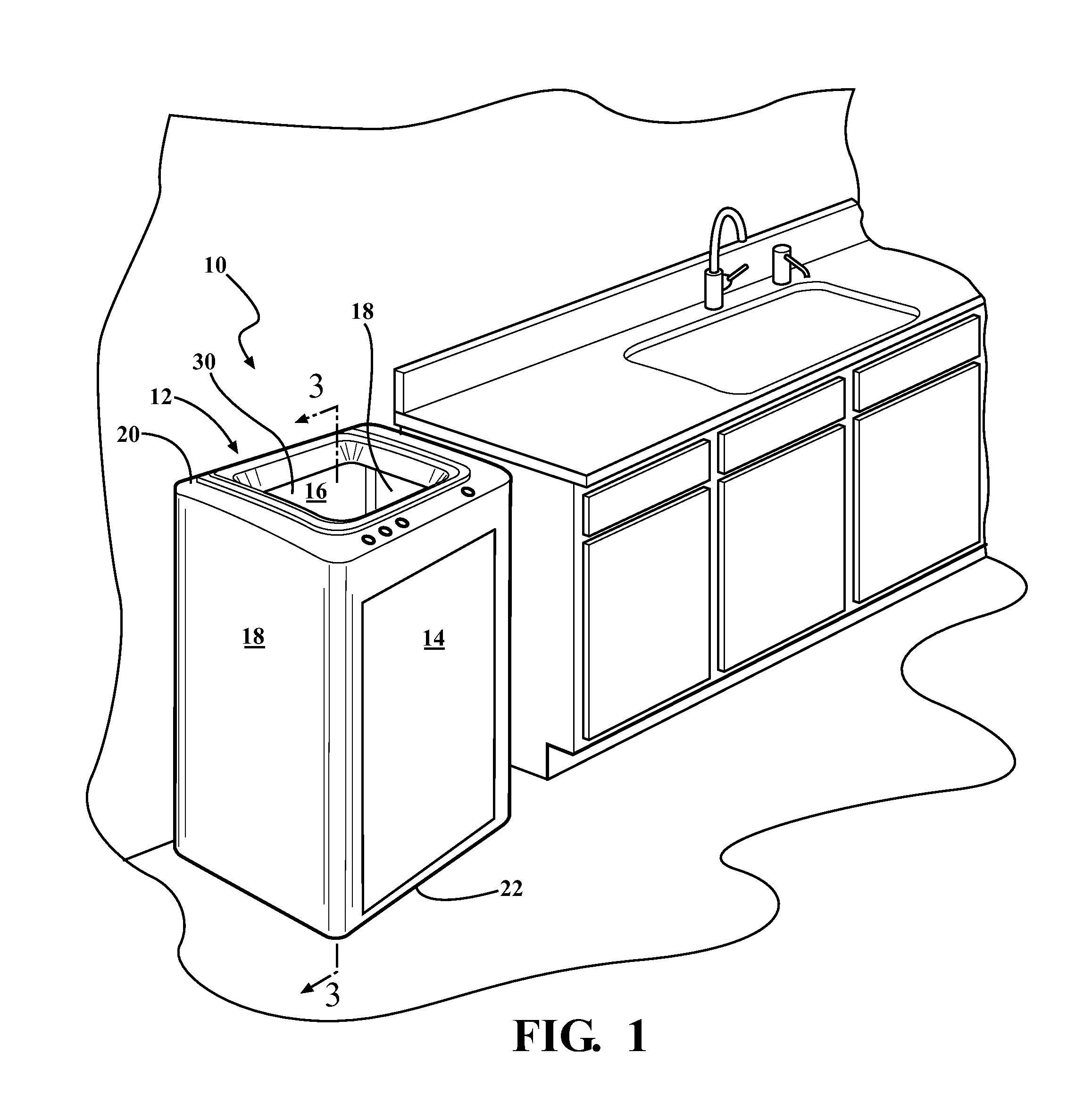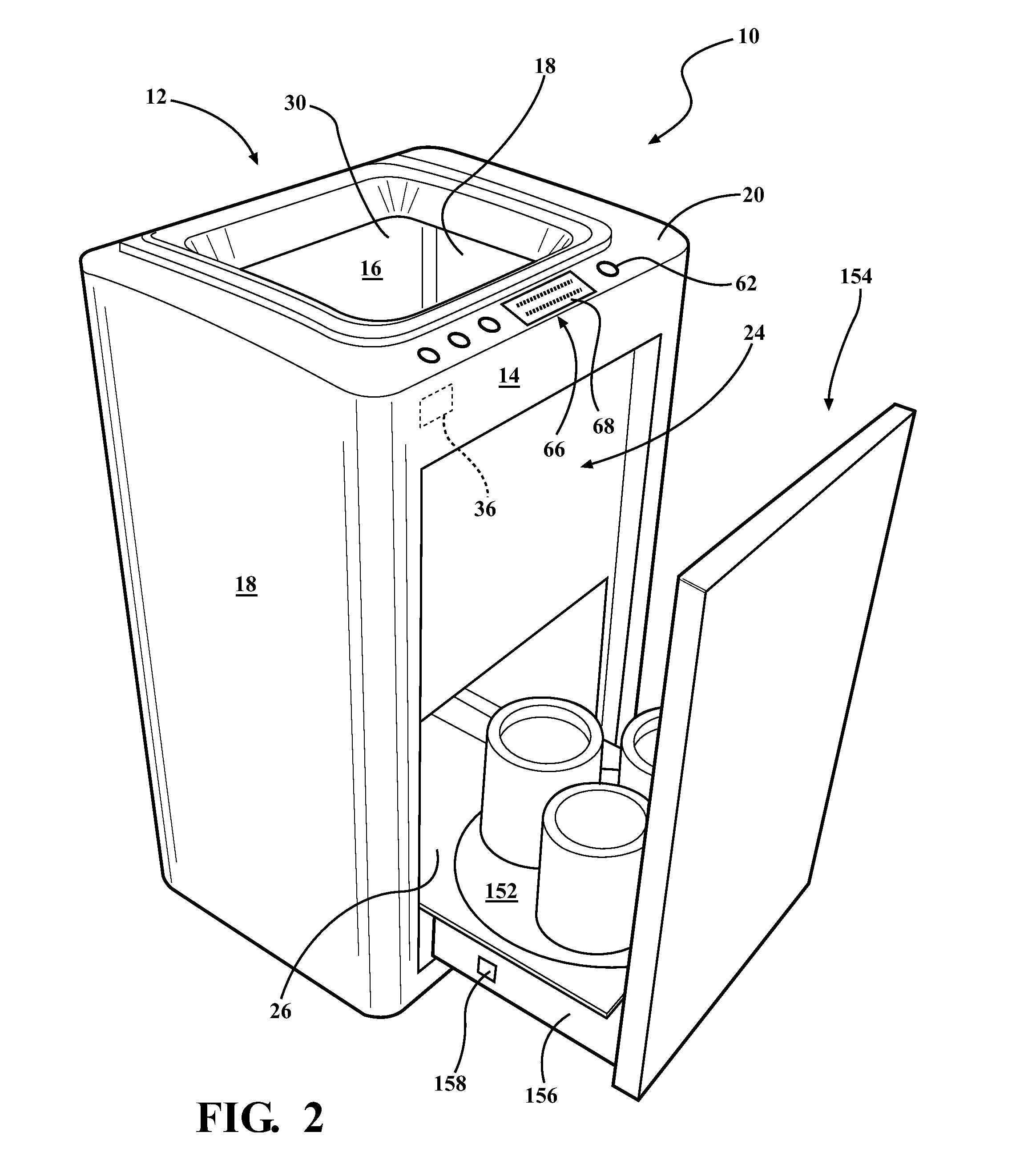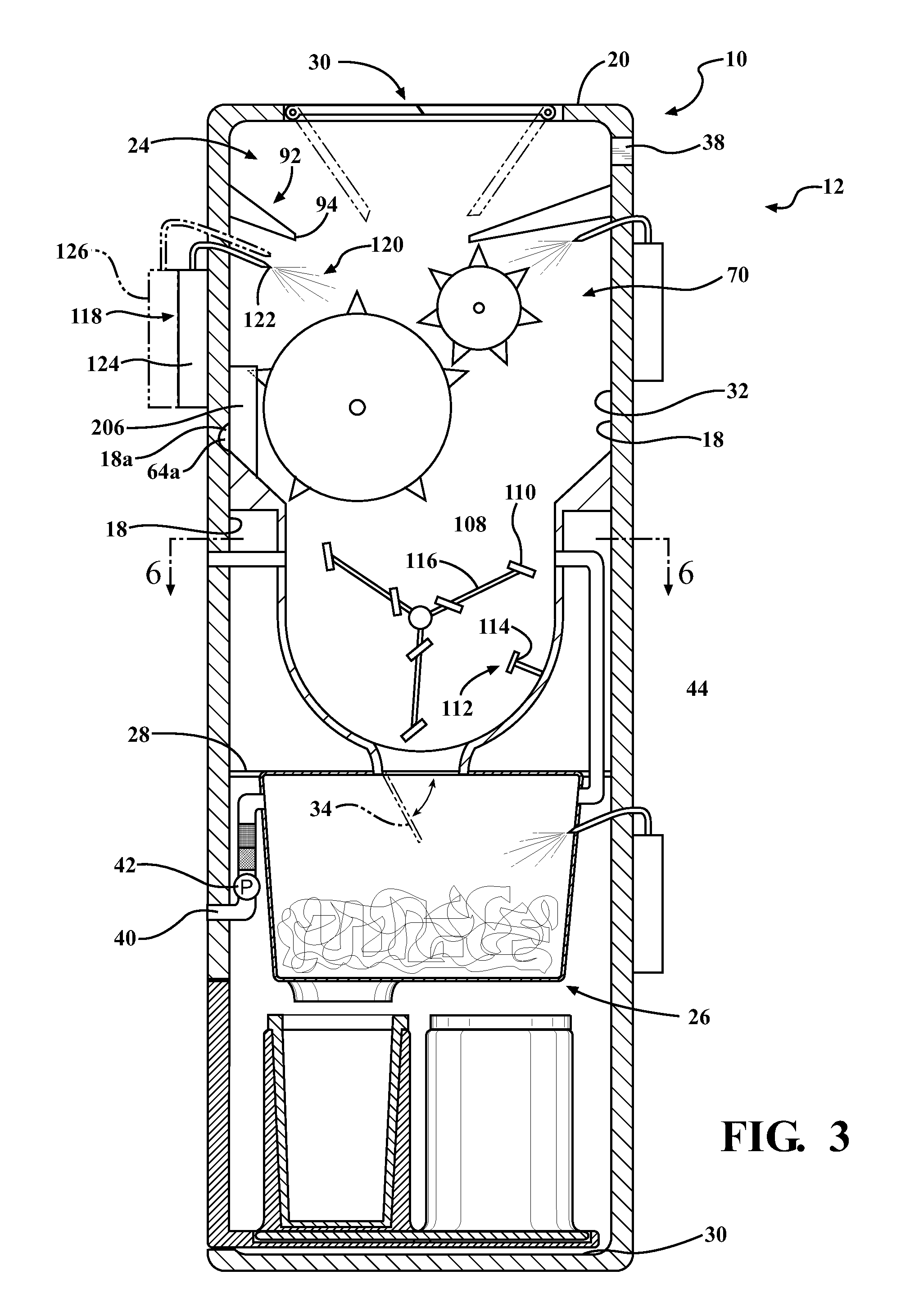Composting device
a composting device and composting technology, applied in the field of composting devices, can solve the problems of requiring months to produce usable compost, unable to facilitate the curing process and the composting process, and limited current residential composting assemblies, etc., to achieve the effect of facilitating and exposing the refuse surfa
- Summary
- Abstract
- Description
- Claims
- Application Information
AI Technical Summary
Benefits of technology
Problems solved by technology
Method used
Image
Examples
Embodiment Construction
[0026]With reference first to FIGS. 1-3, a device 10 for transforming refuse into compost is provided. The device 10 includes a housing 12 having a front wall 14 spaced apart a back wall 16, and a pair of side walls 18 extending between the front and back walls 14, 16. The housing 12 also includes a top wall 20 opposite a bottom wall 22. The housing 12 may be formed of a rigid and durable material such as steel, a metal alloy, or a hardened polymer composite material.
[0027]A first chamber 24 and a second chamber 26 are disposed within the housing 12. The first chamber 24 may include a bottom floor 28 spaced apart the top wall 20 and the bottom wall 22. The bottom floor 28 extends between the side, front and back walls 18, 14, 16 so as to enclose the first chamber 24.
[0028]The top portion of the first chamber 24 is enclosed by the top wall 20 of the device 10 and may include a first opening 30 for receiving refuse. The inner surfaces of the side walls 18, and front and back walls 14,...
PUM
| Property | Measurement | Unit |
|---|---|---|
| thermal energy | aaaaa | aaaaa |
| temperature | aaaaa | aaaaa |
| durable | aaaaa | aaaaa |
Abstract
Description
Claims
Application Information
 Login to View More
Login to View More - R&D
- Intellectual Property
- Life Sciences
- Materials
- Tech Scout
- Unparalleled Data Quality
- Higher Quality Content
- 60% Fewer Hallucinations
Browse by: Latest US Patents, China's latest patents, Technical Efficacy Thesaurus, Application Domain, Technology Topic, Popular Technical Reports.
© 2025 PatSnap. All rights reserved.Legal|Privacy policy|Modern Slavery Act Transparency Statement|Sitemap|About US| Contact US: help@patsnap.com



